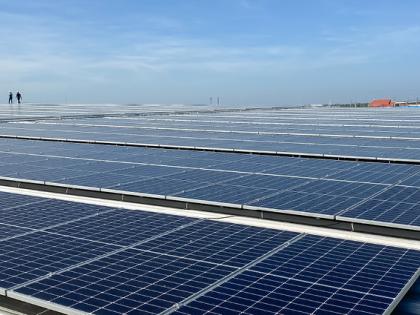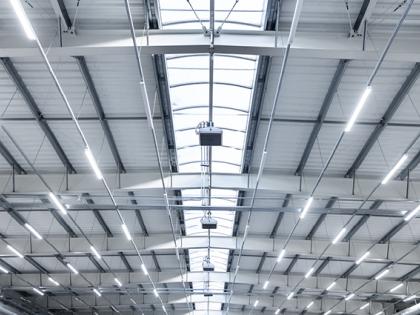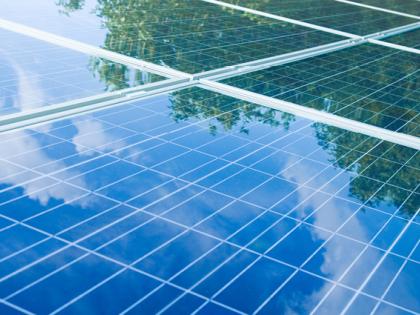Tenant Partnerships – The Road to a Sustainable Future
How W. P. Carey is navigating net lease challenges to boost property quality and achieve shared sustainability goals
As Climate Week NYC approaches, the spotlight on sustainability is brighter than ever. For companies across industries, the annual event underscores the urgent need to address climate change. The real estate sector, estimated to be responsible for nearly 40% of global carbon emissions, plays a critical role in advancing this worldwide effort.
At W. P. Carey, we recognize our potential to drive meaningful impact in the fight against climate change through our extensive portfolio of over 1,200 net lease properties. While the net lease model means our tenants have full operational control of their properties, we are committed to collaborating with them to achieve shared sustainability goals and enhance the quality of our properties. Here’s how:
Gaining insights through data
Collecting detailed energy data remains a core focus for us. Collaborating with our tenants to install IoT smart meter systems provides both us and our tenants access to high-quality utility data for their leased properties. This data can be utilized to assess energy usage for regulatory compliance as well as voluntary reporting. It also enables us to calculate the carbon footprint of our portfolio and identify opportunities to implement energy-saving measures at our properties.
In 2023, we began a smart meter installation program with our European tenants, making the process more efficient for both W. P. Carey and our tenants while also reducing the risk of data errors.
Renewable energy opportunities
Renewable energy can reduce building operating costs and lower carbon emissions. One of the most accessible sources of renewable energy is solar power, which can be harnessed through the installation of solar panels.
Particularly given the roof space that our industrial and warehouse assets provide, we believe we have a large addressable market for solar. Through W. P. Carey’s CareySolar® program, tenants have the opportunity to take advantage of rooftop and carport solar installations at their leased properties through a broad array of structures. These include:
- Landlord-operated
- Landlord-financed
- Tenant projects
- Rooftop leases
W. P. Carey collaborates with each tenant to understand their current energy usage and determine the ideal solar solution for their unique property.
In 2023, W. P. Carey extended the lease term with an existing tenant for their 265,000-square-foot industrial facility in Illinois. Simultaneously, we signed a 15-year power purchase agreement where we plan to build a 1,350-kilowatt roof mounted solar system that would offset 740 metric tons of CO2 annually. We will manage and fund the construction of the system and sell the power generated by the system to the tenant.
Building energy retrofits
Implementing sustainable features to improve energy efficiency has a huge impact on a property’s life-cycle emissions. W. P. Carey can do this through property-specific energy retrofits.
An example of an energy retrofit is the installation of LED lighting. LED lights are 80% to 90% more energy efficient than other light bulbs and do not contain any environmentally hazardous materials. Additionally, LEDs last up to 25 times longer than traditional incandescent bulbs.
In 2023, W. P. Carey completed a full LED retrofit at our 1.5 million-square-foot warehouse in University Park, Illinois. The LED project is expected to result in a 35% reduction in lighting electricity usage and 41% reduction in utility and maintenance bills at the property. Following the completion of the retrofit, we leased the property to Samsung for a term of 10.5 years.
Green-building certifications
Green-building certifications such as LEED and BREEAM can provide many benefits for both landlords and tenants. Achieving a green-building certification means that a property meets certain sustainability requirements across a variety of categories including energy, air quality and water usage. Certified buildings are typically more energy and cost efficient and create healthier work environments for employees.
In addition to being more environmentally friendly, green-certified buildings can offer tax benefits. Many states offer tax incentives for green building projects, based on either energy savings or reaching a certain level of certification. Real estate studies have also shown that green buildings sell and lease faster than traditional buildings, and garner higher rents and lease rates.
At W. P. Carey, we’re committed to achieving green-building certifications where we can, and our portfolio includes 6.6 million square feet of green-certified buildings as of June 30, 2024. In 2024, our state-of-the-art food research facility in the Netherlands received a BREEAM Outstanding certification, the highest level of BREEAM certification for buildings worldwide.
Conclusion
Reducing the carbon footprint of a net lease portfolio is an enormous challenge, but by bolstering tenant engagement and systematically identifying sustainability opportunities, progress is possible. Sustainable real estate is beneficial to the planet, attractive to tenants and improves the value of our broader portfolio, making it a win-win-win for all.
You May Also Like:

Here Comes the Sun!
Real estate, one of the largest contributors to carbon emissions, accounts for approximately 37% of the world's greenhouse gas emissions. This makes it a critical sector in the global effort to...
The Benefits of LED Lighting for Commercial Real Estate Tenants
As environmental concerns become prominent in today’s market and green initiatives drive corporate decisions for investors and consumers, businesses are focused on reducing their carbon footprint....